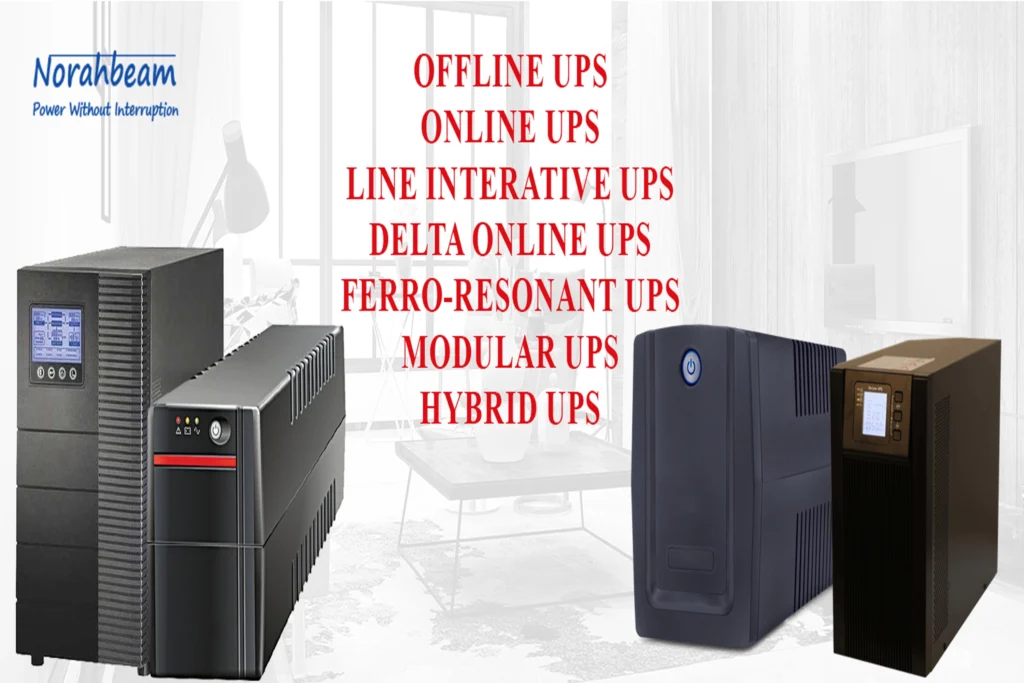
A UPS, or Uninterruptible Power Supply, is an electrical device that provides emergency power to a load when the main power source fails. The UPS is designed to ensure that electronic equipment or critical systems have a continuous power supply, protecting them from power interruptions, fluctuations, and outages.
There are several types of UPS systems, each with its own characteristics and applications:
Offline/Standby UPS:
This type allows the load to be powered directly by the mains power when it’s available. If there’s a power failure, the UPS switches to the battery backup. There’s a slight delay when switching between the mains and the battery, which might cause a momentary interruption.
This offline/standby UPS is suitable for protecting personal computers, home electronics, and small business equipment.
Line-Interactive UPS:
This UPS incorporates an additional feature compared to the standby UPS. It includes an automatic voltage regulator (AVR) that regulates low and high voltages without switching to battery power, which can help to protect against power fluctuations.
This type of UPS are commonly used for servers, networking equipment, and other sensitive electronic devices.
Online/Double-Conversion UPS:
In an online UPS, the load is continuously powered by the inverter, which is supplied by both the battery and the AC power input. The input AC power is first converted to DC to charge the battery and then converted back to AC for the output. This provides the cleanest and most consistent power supply but is generally more expensive..
Suitable for critical applications, such as data centers, medical equipment, and industrial processes.
Delta Conversion (Delta Online UPS):
A variation of the online UPS, the delta conversion UPS uses a rectifier to convert AC power to DC power, and then the inverter converts DC power back to AC. This design provides additional benefits in terms of efficiency and power factor correction.
These UPS are ideal for data centers, telecommunications, and other critical infrastructure.
Ferroresonant (Ferro-Resonant) UPS:
Uses a special type of transformer that maintains a constant output voltage, even if the input voltage varies. This design provides a certain level of voltage regulation without the need for additional circuitry.
These UPS are historically used for applications where constant voltage is critical, but its use has diminished over time due to the availability of more efficient technologies.
Modular UPS:
A Modular UPS system is designed with modularity in mind, meaning it consists of independent modules that can be added or removed to scale the system’s capacity or redundancy. Each module typically includes its own power conversion components, such as rectifiers, inverters, and batteries. These modules operate in parallel to share the load and enhance reliability
Modular UPS often used in data centers, Telecommunication Industry etc.
Hybrid (Multi-Mode) UPS:
A Hybrid UPS, also known as a Multi-Mode UPS, combines features of different UPS types to offer a flexible and adaptive solution. The key idea is to provide multiple operating modes to address various power conditions efficiently. The common modes include Standby Mode, Line-Interactive Mode, Double-Conversion Mode.
These are used in areas like Financial Institutions like banks, data centers, telecommunication industry etc.


